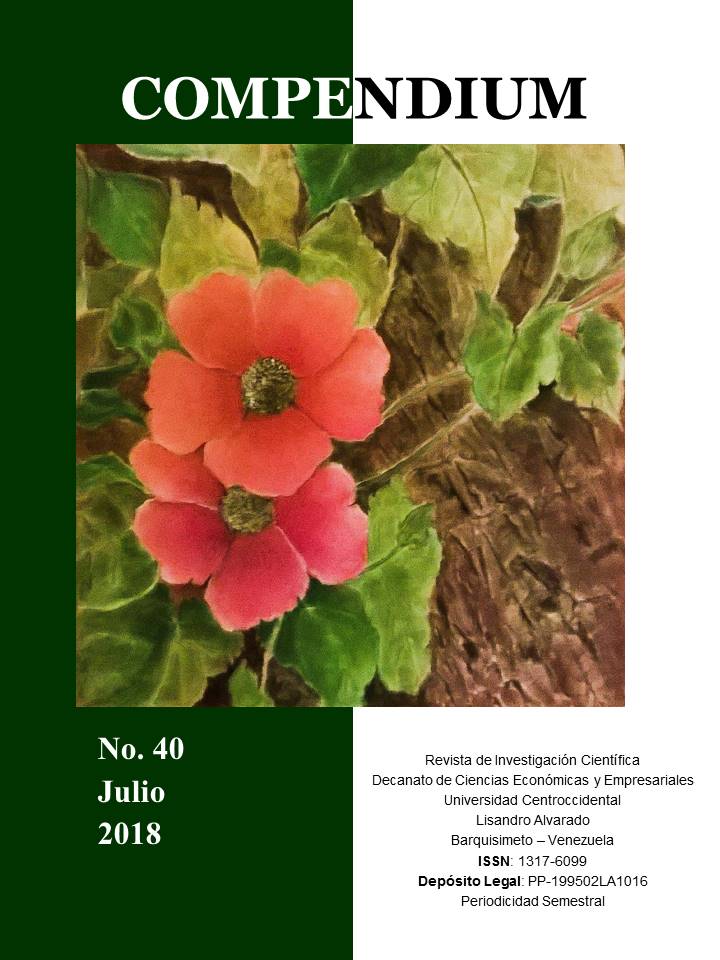Factors and indicators of hotel competitiveness
Keywords:
Hospitality, competitiveness, factors and indicatorsAbstract
Competitiveness has become an objective for companies, including the tourist ones. However, some studies have confused the factors that produce it with the measurement indicators. This paper of a theoretical nature is developed from a literature review of empirical studies conducted in different countries. Indicators are extracted from those studies and they are used for their measurement in the hotel industry and the information they provide for their interpretation in terms of competitiveness. All of this, in order to identifying the relevance of its use in the hotel industry. As results, there have been found that the factors that produce competitiveness are those that have to do with the processes and conditions of the service, it is recognized that these vary depending on tourist context, while in order to determine the effectiveness of its management, the Gross Operational Profit (GOT), the Revenue Per Available room (RevPAR), and the percentage of occupancy are the indicators that allow comparisons and establish positions between hotel companies in similar environments.
Downloads
References
Aznar, J., Bagur, L., Rocafort A. (2016). Impacto de la calidad del servicio en la competitividad y rentabilidad: El sector hotelero en la costa catalana. Intangible Capital, 12(1), 147-166.
Bontis, N., Janosevic, S., Dzenopoljac, V. (2015). Intellectual capital in Serbia’s hotel industry. International Journal of Contemporary Hospitality Management, 27(6), 1365–1384.
Camisón, C., Forés, B. (2015). Is tourism firm competitiveness driven by different internal or external specific factors?: New empirical evidence from Spain. Tourism Management, 48(1), 477–499.
Campos-Soria, J. A., González, L., Ropero, M. A. (2005). Service quality and competitiveness in the hospitality sector. Tourism Economics, 11 (1), 85–102.
Cann, O. (2016). ¿Qué es la competitividad? Recuperado de: https://www.weforum.org/es/agenda/2016/10/que-es-la-competitividad/
Carmona, G. (2012). Hospitality Competitiveness Measurement System. Journal of Global Business & Technology Association, 8(2), 29–37, 2012.
Consejo Nacional Empresarial Turístico (CNET). (2012). Utilización de la oferta turística. Panorama de la Actividad Turística, 5 (marzo). Recuperado de http://www.cnet.org.mx/panorama
Customer Alliance (2016). From RevPAR to TRevPAR. How profitable is your hotel? Recuperado de: http://www.customer-alliance.com/en/articles/revpar/
Demuner, M., Aguilera, M., Hernández, A. (2010). El proceso de competitividad empresarial en Pymes. En Sistemas de Innovación para la Competitividad (pp. 1-25) Guanajuato, México.
Engstrom, T., Westnes, P., Westnes, S. (2003). Evaluating intellectual capital in the hotel industry”. Journal of Intellectual Capital, 4 (3), 287–303.
Esser, K., Hillebrand, W., Messner, D., Meyer-Stamer, J. (1996). Competitividad sistémica: Nuevo desafío a las empresas y a la política. Revista de La CEPAL, (59), 39–52.
Estrada, A., Morgan, J., Cuamea, O. (2014). Factores de competitividad en las empresas hoteleras de Tijuana, Baja California. Teoría y Praxis, Núm. Especial, 32–59.
Jiménez, R. (2006). Modelo de competitividad empresarial. Umbral Científico, 9(1), 115–125.
Kim, T., Kim, W.G., Park, S.S.-S., Lee, G., Jee, B. (2012). Intellectual capital and business performance: what structural relationships do they have in upper-upscale hotels?. International Journal of Tourism Research, 14(4), 391-408.
Lillo, A., Ramón, A., Sevilla, M. (2007). El capital humano como factor estratégico para la competitividad del sector turístico. Cuadernos de Turismo, 19, 47–69.
Instituto Mexicano para la Competitividad (IMCO). (2012). ¿Qué es competitividad? Recuperado de: http://imco.org.mx/videos_es/que_es_competitividad_-_imco/
Manosalvas, C., Manosalvas, L. (2014). Diagnóstico de los factores que influyen en la competitividad de las empresas de alojamiento. Global conference on business and finance proceedings. 9(1), 1661–1669.
Narváez, M., Fernández, G., Henríquez, A. (2013). Competitividad de empresas turísticas: Un análisis desde el enfoque sistémico. Revista de La Facultad de Ciencias Económicas, XXI(1), 243–260.
Narváez G., Guerrero, C., Villapardo O. (2017). La competitividad del sector hotelero a partir de la teoría de los recursos y capacidades. Revista Internacional Administración y Finanzas, 10 (2), 2017, 93-105.
Organización para la Cooperación y Desarrollo Económicos (1992). Technology and the Economy. Recuperado de: http://www.oecdbookshop.org/en/browse/title-detail/Technology-and-the-Economy/?K=5LMQCR2K9R5B
Parreño, J., Ruiz, E., Mas, F. (2000). Efectos cuota de mercado e industria sobre los resultados. Revista de Economía Aplicada, VIII (23), 165–188.
Penrose, E. (1959). The Theory of the Growth of the Firm. Oxford: Basil Blackwell and New York: John Wiley & Sons.
Perles-Ribes, J., Ramón-Rodríguez, A., Sevilla-Jiménez, M. (2014). La cuota de mercado como indicador de competitividad en los destinos turísticos: Sentido y limitaciones. Cuadernos de Turismo, 34(1), 265–285.
Porter, M. (2010) Ventaja competitiva. Creación y sostenimiento de un desempeño superior. 6ª ed. México: Patria.
Ramírez, J., García T., Cano., M. (2013). Diagnóstico de factores de competitividad de una empresa Hotelera. Ciencia Administrativa, 2(1), 9-18.
Rodríguez, F. (Noviembre de 2013). Medición de la competitividad en las empresas turísticas familiares de Michoacán. Congreso de Investigación Turística Aplicada. 1–10.
Rubio, A., Aragón, A. (2008). Recursos estratégicos en las pymes. Revista Europea de Dirección y Economía de La Empresa, 17(1), 103–126.
Saavedra, M. (2012). Una propuesta para la determinación de la competitividad en la pyme latinoamericana. Pensamiento y Gestión, 33(1), 93-124.
Secretaría de Turismo (2013). Programa Sectorial de Turismo 2013-2018. México: Gobierno Federal de México.
Secretaría de Turismo y Universidad Anáhuac del Sur A. C. (2014) Metodología para la medición de la competitividad de los prestadores de servicios turísticos inscritos en las certificaciones y los sellos de calidad de la Secretaría de Turismo (SECTUR), México: Lid Editorial Mexicana.
Secretaría de Turismo (2015). La información en línea como método de análisis de la actividad hotelera y percepción de los turistas. Documentos de investigación Estadística y Económica. Recuperado de: http://www.datatur.sectur.gob.mx/Documentos Publicaciones/2015_1_DocInvs.pdf
Secretaría de Turismo (2018). Comunicado 23. Recuperado de https://www.gob.mx/sectur/prensa/en-2017-mexico-capto-39-3-millones-de-turistas-internacionales-y-una-derrama-de-21-3-mmdd?idiom=es
Somaye, S., Mohammad, G., Mohammad, N. (2014). The effect of intellectual capital on organization’s financial performance. International Journal of Management Academy, 2(3), 26–34.
Sopde (2005). Indicadores de competitividad hotelera. Málaga. Recuperado en: https://www.yumpu.com/es/document/view/37549216/indicadores-de-competitividad-hotelera-area-profesional-/5
Tsai, H., Song, H., Wong, K. (2009). Tourism and Hotel Competitiveness. Journal of Travel & Tourism Marketing, 26(5–6), 522–546.
Zeglat, D., Zigan, K. (2014). Intellectual capital and its impact on business performance: Evidences from the Jordanian hotel industry”. Tourism and Hospitality Research, 13 (2), 83–100. Recuperado de: http://doi.org/10.1177/1467358413519468




